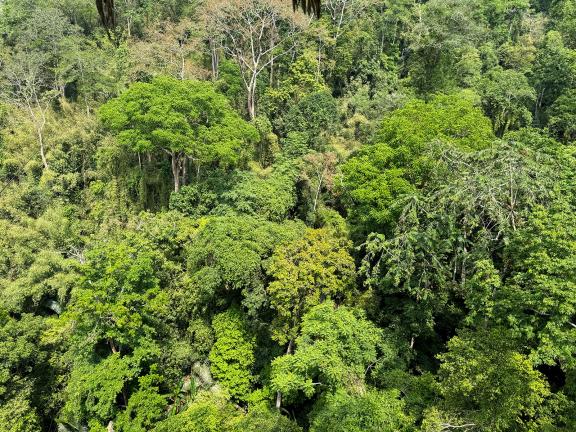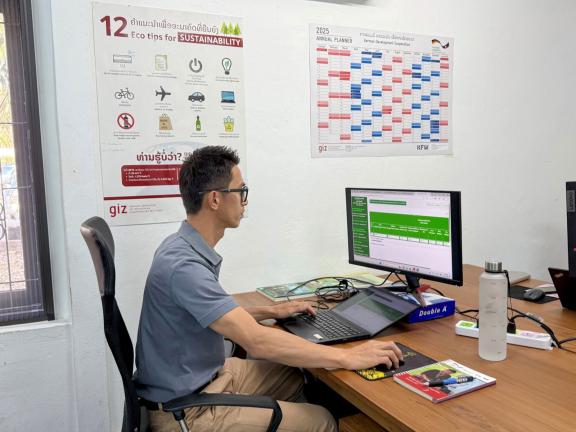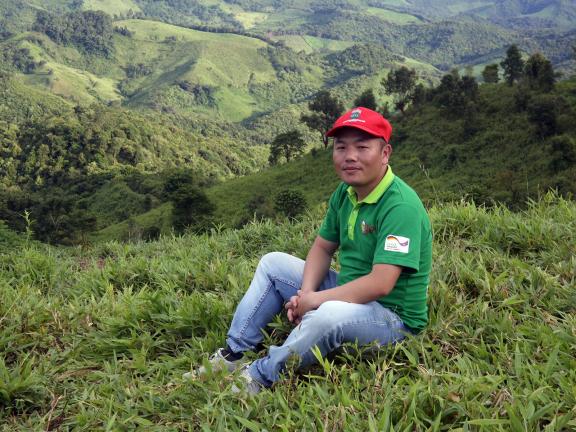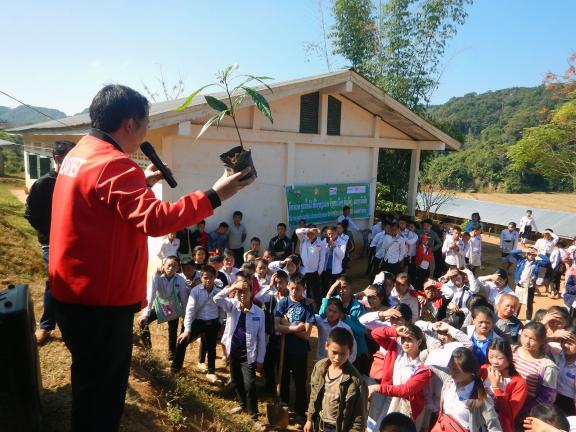At the edge of a forest clearing in Meuangkao Village, Khamla Nanthavong, a National Forestry Adviser, reviews data on his tablet. Not long ago, this area faced the threat of illegal logging. Today, strengthened community agreements and targeted patrols, guided by real-time insights, safeguard the forest.
"Without this data, our work would be much more challenging," Khamla explains. Across Lao People's Democratic Republic (PDR), a new cloud database is enhancing forest conservation by providing real-time monitoring, supporting land-use planning, and strengthening community-led protection efforts.
As a landlocked Least Developed Country (LDC), Laos is highly vulnerable to climate change due to its economic dependence on natural resources. Despite having the highest proportion of forest cover in mainland Southeast Asia, the country has faced severe deforestation in recent decades. To address these challenges, the Green Climate Fund (GCF) is funding an ambitious REDD+ emission reduction programme to promote sustainable land use and forest protection, implemented by Deutsche Gesellschaft für Internationale Zusammenarbeit (GIZ).

Aerial view of a tropical forest in Laos with typical dense vegetation and biodiversity. These forests are under pressure from deforestation and land-use changes. Strengthening sustainable forest management is essential to preserving these ecosystems for future generations. Photo: GIZ/ Marius Knickenberg
The programme focuses on strengthening financial mechanisms, improving legal and regulatory frameworks, and promoting deforestation-free agriculture. A key milestone in this effort has been the introduction of a cloud database in 2020, which facilitated the demarcation and integration of approximately 900,000 hectares of village land into formal land-use plans.
Local action, global response
The cloud database provides real-time monitoring, quality control, and documentation of forest conservation activities. The database offers stakeholders easy access to critical implementation documents that address and resolve forest encroachment issues.
National advisers can track emerging challenges and optimise resource allocation based on real-time data. In 2024, the system flagged an increased number of fire incidents near Nalae Village and in response, local forestry teams implemented targeted patrols and strengthened early warning systems. Within six months, fire outbreaks in the area decreased by 40 per cent, protecting over 500 hectares of forest.
Over 240 Village Forest Management Plans (VFMPs)—a planning process that collects, collates, and analyses data on forest conditions and resources—have been developed in three northern provinces of Laos, covering more than 474,400 hectares of village forests. By combining technology with participatory conservation, the program sets a new benchmark for sustainable forest management in the region.

Khamla Nanthavong, National Forestry Adviser, searches the database for information on the progress of programme implementation. Photo: GIZ/I-GFLL .
“In a programme of this scale, with multiple stakeholders and decentralised structures, systematically tracking progress and coordinating field activities is crucial. The cloud database simplifies our work by reducing the need for constant communication and ensuring that important files are stored securely in one place.”
Khamla begins his day by checking updates in the cloud database. His first task is to review reports from Meuangkao Village in Huaphan Province, where local teams are carrying out a VFMP. The plan, created with community input, focuses on sustainable forest management while balancing land use needs. Khamla uses the cloud database to track activities such as fire prevention and forest law enforcement, ensuring progress is on schedule .

A forestry adviser in Huaphan, northern Laos, where communities actively engage in sustainable land use and forest conservation. Photo: GIZ/Peter Livermore
A key part of Khamla’s work is overseeing the demarcation of forest boundaries, like those in Meuangkao Village. These boundaries help differentiate protected forests from agricultural land, reducing disputes and supporting REDD+ initiatives. The cloud database records GPS coordinates, survey data, and agreements, allowing Khamla to monitor compliance and identify problems like illegal encroachment without being on-site.
Later, Khamla works with provincial forestry officers to review data from several villages, refining plans and updating land-use agreements, focusing on high-risk areas. Khamla uploads everything to the database for transparency and efficiency.

A forestry expert engages students in Huaphan Province, demonstrating the importance of tree planting for environmental restoration. 115 students participated in planting 150 fruit trees, contributing to forest recovery and sustainable land management. Photo: Vilatsay Lattanavong/GIZ
Looking ahead: scaling impact and ensuring sustainability
As the programme progresses, the cloud database will continue to be a key tool in strengthening forest conservation and land management. Expanding its use to more villages, integrating remote sensing data, and refining its analytical capabilities will further enhance monitoring, transparency, and decision-making.
Ongoing training will equip communities with the skills to manage their forests effectively, while digital tracking will ensure continued accountability. By combining technology with community-driven conservation, the programme provides a scalable model for REDD+ implementation and climate resilience.

Community members participate in a village meeting in Houaphan Province, Laos, discussing the development of a Village Forest Management Plan. ©GIZ/I-GFLL
The programme safeguards a future for Lao where both people and forests can thrive, ensuring lasting positive change for local communities and generations to come.
Story originally written by GIZ. Edited by Zeenia Dastur, GCF.